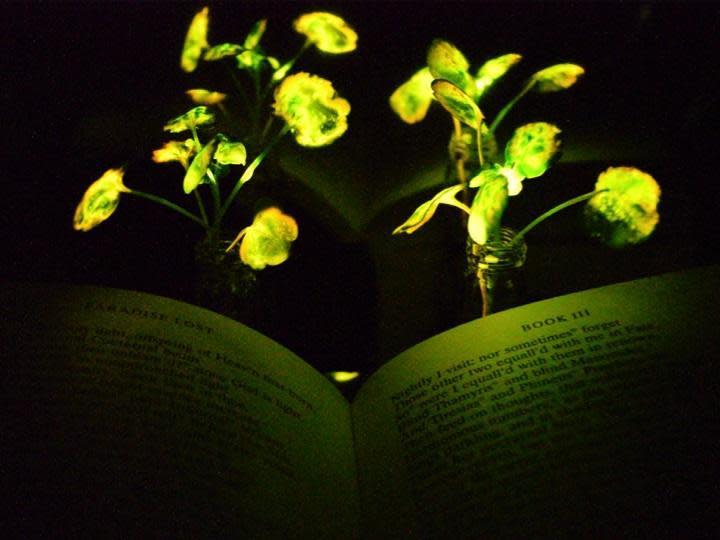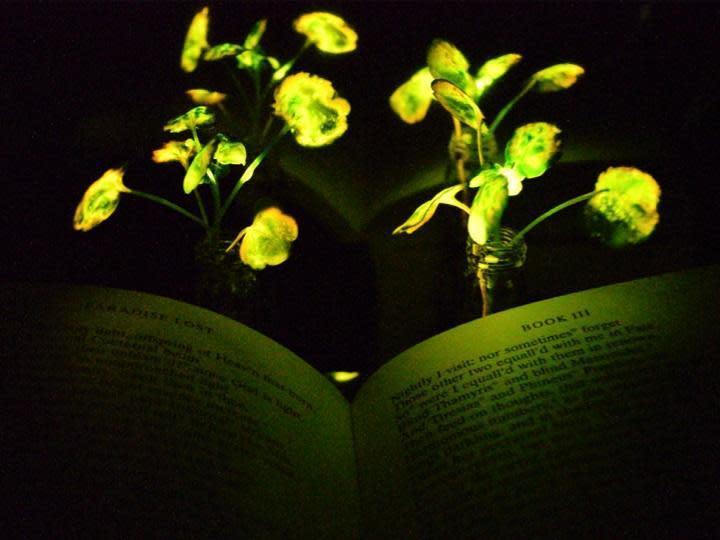Glowing plants that could replace lamps invented by engineers
Scientists have created plants that glow using embedded nanoparticles in leaves, potentially paving the way for trees to replace streetlights.
Experts at the Massachusetts Institute of Technology (MIT) hope their discovery could lead to traditional light sources being replaced with self-sustaining alternatives.
"The vision is to make a plant that will function as a desk lamp – a lamp that you don't have to plug in," said chemical engineer Professor Michael Strano, the senior author of the study.
"The light is ultimately powered by the energy metabolism of the plant itself."
To give the plants their glowing ability, Professor Strano and his colleagues used luciferase, the substance that gives fireflies their glow.
They created nanoparticles containing luciferase, as well as other, larger particles containing luciferin and coenzyme A, which combine with the luciferase to produce the desired effect.
After immersing the plants in a solution containing these particles and exposing them to high pressures, the scientists were able to produce plants that glowed for nearly four hours.
While the work is in its early stages, the team has lofty ambitions for how it could be applied in the future.
"Our target is to perform one treatment when the plant is a seedling or a mature plant, and have it last for the lifetime of the plant," said Professor Strano.
"Our work very seriously opens up the doorway to streetlamps that are nothing but treated trees, and to indirect lighting around homes."
The results of the research were published in the journal Nano Letters.
Other researchers have attempted to create glowing plants using genetic engineering.
These efforts resulted in limited success, and were restricted to a couple of species that are commonly used in genetic research.
The MIT team’s work, on the other hand, has already been tested on an array of salad leaves, including rocket, kale, spinach and watercress.
"Plants can self-repair, they have their own energy, and they are already adapted to the outdoor environment," said Professor Strano.
"We think this is an idea whose time has come.”

 Yahoo News
Yahoo News 

